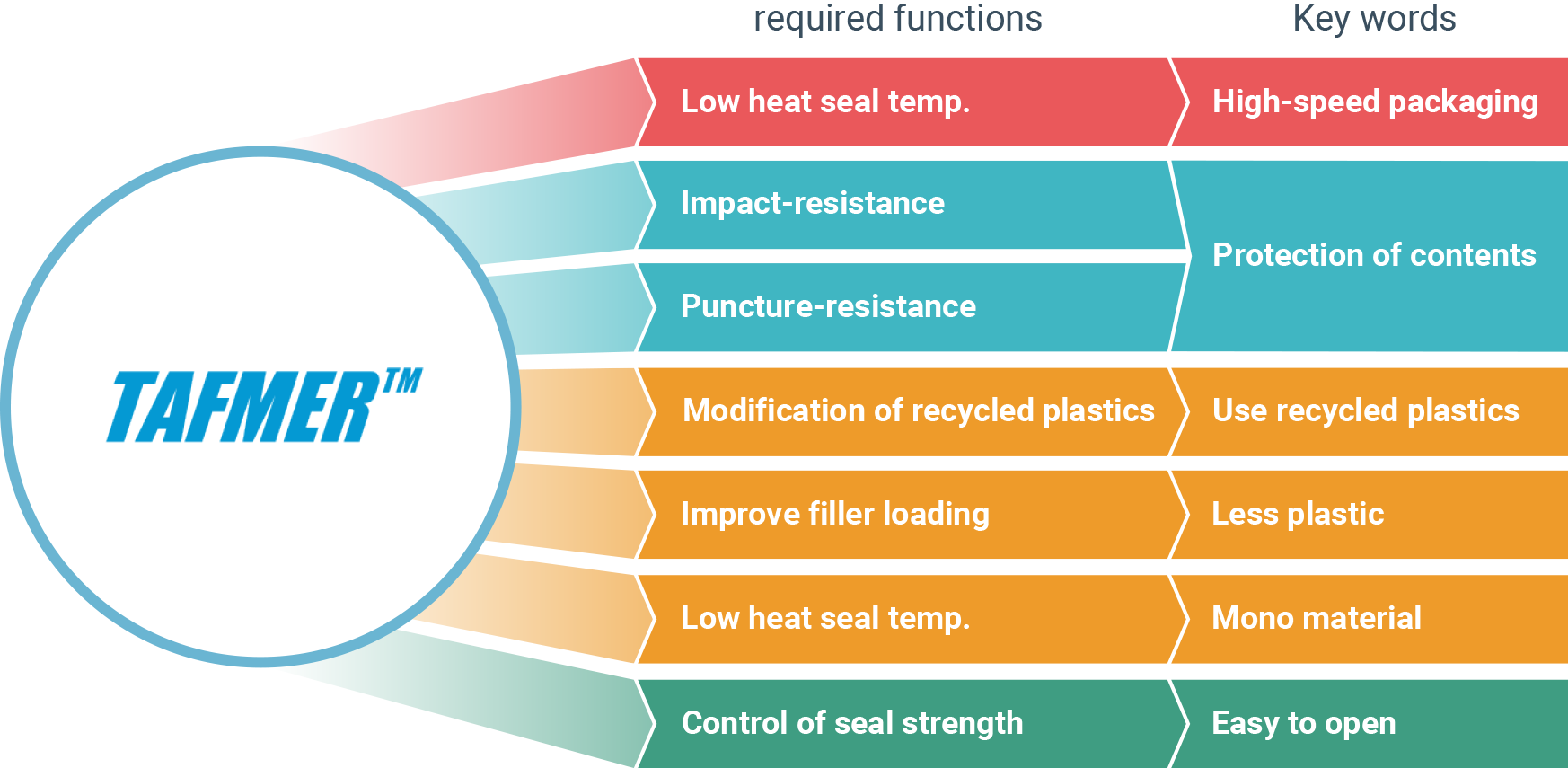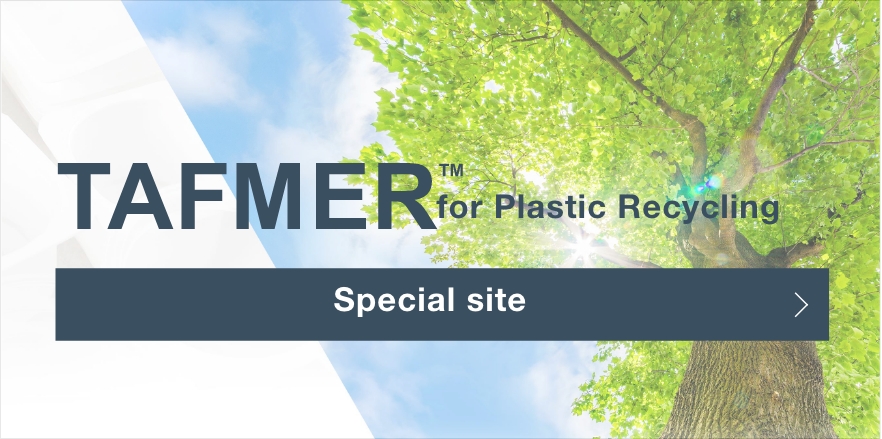TAFMER™ for Mono-Material Packaging
In our world today, there is a growing plastic waste problem, and solving it is a major challenge.Plastic waste pollutes the marine ecosystem, and devastates ocean environments. All companies using plastic(resins) need to change the way they do business.
IThat’s where an important shift comes in - a change from the environmentally
damaging businesscycle of production-consumption-disposal to the sustainable cycle of
production-consumption-collection-recycle.
We promote material recycling that involves the re-use of plastic waste.
PE and PP mixes make up a large part of post-consumer flexible packaging wastes. For a sustainable circulareconomy, mono-PE and mono-PP structures contribute to improve quality of recycled materials.
PROPERTIES
TAFMER™ for packaging application
TAFMER™ helps packaging engineers customize Heat Seal Initiation Temperature (HSIT) of packaging films for high speed flexible packaging applications, maximize impact resistance to protect contents, and adjust sealing property for easy peel-ability.



